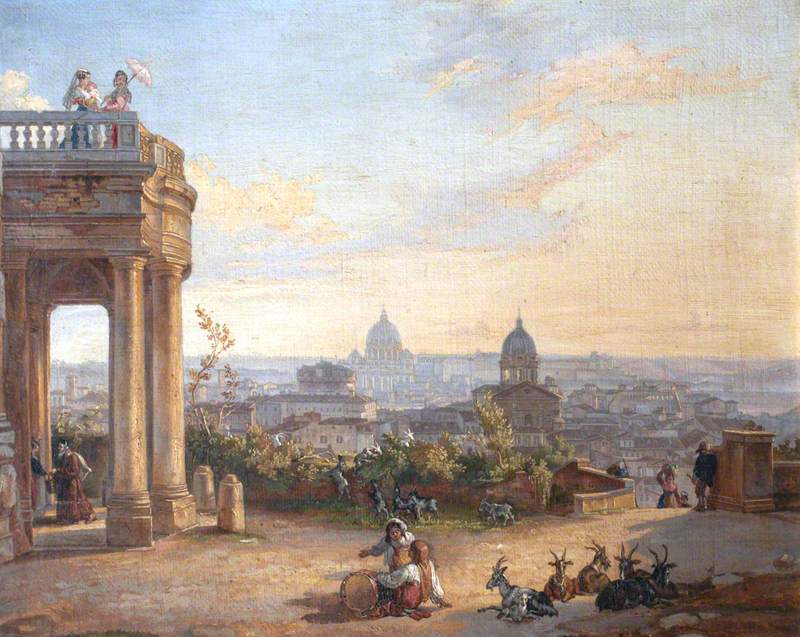
John Newbolt (1803/1805–1867) (attributed to)
National Trust, Antony
An English view painter who lived in Rome, producing scenes of the city and surrounding area for his entire adult life, although he was born in Wokingham, Berkshire, possibly as early as 1803. How he trained is unknown and he may have been in Rome as early as 1820, but certainly by 1825–1826. In 1829, he was lodging with sisters Giovanna and Anna Votieri (whose brother Vincenzo was a sculptor) at 107 Via Felice and the Easter census of that year noted his age as 24. On 6th March 1832, Newbolt married Anna Votieri. They first lived on the top floor at 64 Via Sistina and from 1838 the second floor of 6 Via dei Capuccini. Both addresses were buildings also inhabited by other non-Italian artists. Though mistakenly reported as still living in the Via Sistina and called ‘Newbold’, he is first mentioned in Murray’s Handbook to Rome of 1843 as ‘an English landscape artist of considerable merit’ along with Penry Williams, Thomas Dessoulavy (1800–1869) and Edward Lear, who were also then living in the Via Sistina.
On 14th April 1853 Newbolt’s wife, Anna, died. Twenty months later, on 2nd December 1854 he remarried to the much younger (less than 15) Maria Bernardina Biscioni, a native of Riano, who joined him at the Via dei Capuccini. Two years later, in 1856, he took part in the only known Roman exhibition to include his work. This large show of 378 pictures by both Italian and expatriate local artists, was mounted in the Palazzo del Popolo by the Societa degli Amatori e Coltori di Belli Arti. Newbolt’s entry was no. 278, an oil View of the deserted city of Monterano. In 1862 the Newbolts moved to the first floor of 156 Via Santa Pudenziana, thereafter using the Café Greco, Via dei Condotti as a poste restante contact address and, despite Murray’s claim for him being at the Palazzo Volpata in 1864, he died at Via Santa Pudenziana on 26th September 1867. His funeral took place the following day in the church of SS. Vito e Modesto, though the death was registered at S. Maria Maggiore. His sole entry in the Royal Academy summer exhibition in London was posthumous, in 1868 (no. 622), View of Rome, with Monte Mario and Sir George Beaumont’s Pine. The submission address was 9, Upper Cheyne Row, Chelsea, though whose this was remains to be clarified. The tree was one of three pines considered artistically notable on the Roman skyline, the other two being the Barberini pine at the Palazzo Barberini and the Colonna pine. Wordsworth dedicated a sonnet to that of Monte Mario in his Memorials of a Tour in Italy (1837).
Botfield’s collection and the Murray Handbook references suggest – as do many images of Newbolt’s works passing through the market – that he was a painter skilled at producing polished picturesque views of Rome, ancient and modern, and its surrounding highlights, probably mainly for the visitor market and in easily portable sizes to take or send home. He is likely to have been Catholic (though possibly a convert) and is known to have signed at least one official document as ‘Giovanni Newbolt’. His surname also very commonly appears as ‘Newbott’ and occasionally even more mangled.
See, Pier Andrea Rosa, ‘Pittori Inglesi a Roma nel Ottocento: John Newbolt’, in Strenna dei Romanisti, LXVI (2006), pp.229–41, [2006-parte-1-pp.-1-349.pdf (gruppodeiromanisti.it)] and Art UK’s Art Detective discussion ‘Could this be by Penry Williams (1802–1885)?’
Text source: Art Detective
